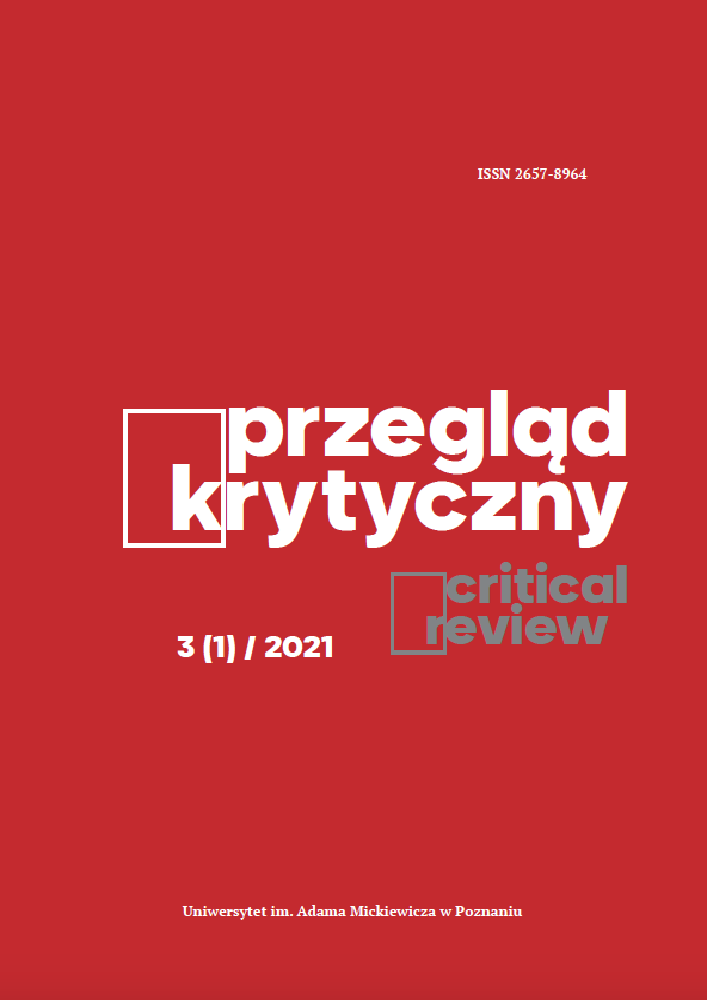Abstract
Studies about urban social movements in Poland concentrate on major cities like Warsaw or other big financial and educational centers. Out of 40 member organizations of the Congress of Urban Movements (as on 31 July 2018)[1], only 2 come from a town of the population under 50 thousand[2]. Small provincial towns experiencing depopulation caused by strong emigration to metropolises have another notion of their “right to the city” feelings. This article examines the case of Aktywne Giżycko (Active Giżycko), an association from a 30 thousand Masurian town. It aims to answer the question why this “right to the city” organization emerged in a small town, while in Poland it is still mainly domain of big agglomerations. The investigation was based on a 3-year long research comprising biographical interviews, participating observations, archive studies and local press surveys.
Funding
Social and spacial mobility in biographical and generational experience of the small town's inhabitants - example of Giżycko (NCN OPUS 11 nr 2016/21/B/HS6/03787)
References
Anderson, Chris. 2006. The long tail: Why the Future of Business is Selling Less for More. New York: Hyperion.
Ashlock, Mary Z. and Ahmet Atay, eds. 2019. Examining millenials reshaping organizational cultures. From theory to practice. Lanham, Boulder, New York, London: Lexington.
Boje, Thomas P. 1986. „Segmentation and mobility: an analysis of labor market flows on the Danish labor market.” Acta Sociologica 29(2): 171-178.
Bourdieu, Pierre. 1984. Distinction. A social critique of the judgment of taste. Trans. Richard Nice. London-New York: Routledge.
Główczyński, Maciej. 2017. „Gentryfikacja miast – przegląd literatury polskiej i zagranicznej.” Rozwój Regionalny i Polityka Regionalna 39: 61–78.
Kubicki, Paweł. 2017. “Od miejskiego aktywizmu do miejskich ruchów społecznych.” Annales Universitatis Mariae Curie-Skłodowska Lublin-Polonia vol. XXIV(2): 173-186.
Kubicki, Paweł. 2019. “Ruchy miejskie w Polsce. Dekada doświadczeń.” Studia Socjologiczne 3 (234): 5–30.
Kusiak, Joanna. 2017. Chaos Warszawa. Porządki przestrzenne polskiego kapitalizmu. Warszawa: Fundacja Nowej Kultury Bęc Zmiana.
Lees, Loretta, Tom Slater and Elvin Wyly. 2010. The Gentrification Reader. London and New York: Routledge.
Levenson, Alec R. 2010. “Millennials and the world of work: an economist’s perspective.” Journal of Business & Psychology 25(2): 257-264.
Łukowski, Wojciech and Piotr Koryś. 2018. „Globalizacja, lokalność, migracje”. P. 128-141 in 25 wykładów o migracjach ed. by M. Lesińska and M. Okólski. Warszawa: Scholar.
Piore, Michael J. 1975. “Notes for a Theory of Labor Market Stratification”. P. 125-150 in Labor Market Segmentation ed. by R. C. Edwards, M. Reich and D. M. Gordon. Lexington, Massachusetts, Toronto, London: Heath.
Pluciński, Przemysław. 2018. “Forces of Altermodernization: Urban Social Movements and the New Urban Question in Contemporary Poland.” Voluntas: International Journal of Voluntary and Nonprofit Organizations vol. 29(4). Retrieved June 8, 2018 (https://link.springer.com/article/10.1007%2Fs11266-018-0007-x)
Pobłocki, Kacper. 2014. “Gentryfikacja, własność i polski kapitalizm polityczny.” Politeja 27: 157-178.
Reckwitz, Andreas. 2016. Kreativität und soziale Praxis: Studien zur Sozial – und Gesellschafts theorie. Seiten: transcript.
Sassen, Saskia. 1991. The Global City. New York, London, Tokyo: Princeton University Press.
Sassen, Saskia. 2005. “The global city: introducing a concept.” Brown Journal of World Affairs 11 (2): 27-43.
Sassen, Saskia. 2016. “A Massive Loss of Habitat: New Drivers for Migration.” Sociology of Development vol. 2(2): 204-233.
Internet sources:
Center of Promotion and Tourist Information in Giżycko: http://www.gizycko.turystyka.pl/
CBOS report BS/92/2013 – “Studia wyższe – dla kogo, po co i z jakim skutkiem” https://www.cbos.pl/SPISKOM.POL/2013/K_092_13.PDF
Strategia Rozwoju Giżycka na lata 2015-2025 (document of the Giżycko Town Council): http://mojegizycko.pl/wp-content/uploads/2016/04/Strategia-Rozwoju-Gi%C5%BCycka-na-lata-2015-2025_06.04.2016.pdf
License
W przypadku zakwalifikowania tekstu do druku Autor wyraża zgodę na przekazanie praw autorskich do tego artykułu wydawcy (zob. Polityka open access). Autor artykułu zachowuje prawo wykorzystania treści opublikowanego przez czasopismo artykułu w dalszej pracy naukowej i popularyzatorskiej pod warunkiem wskazania źródła publikacji.


